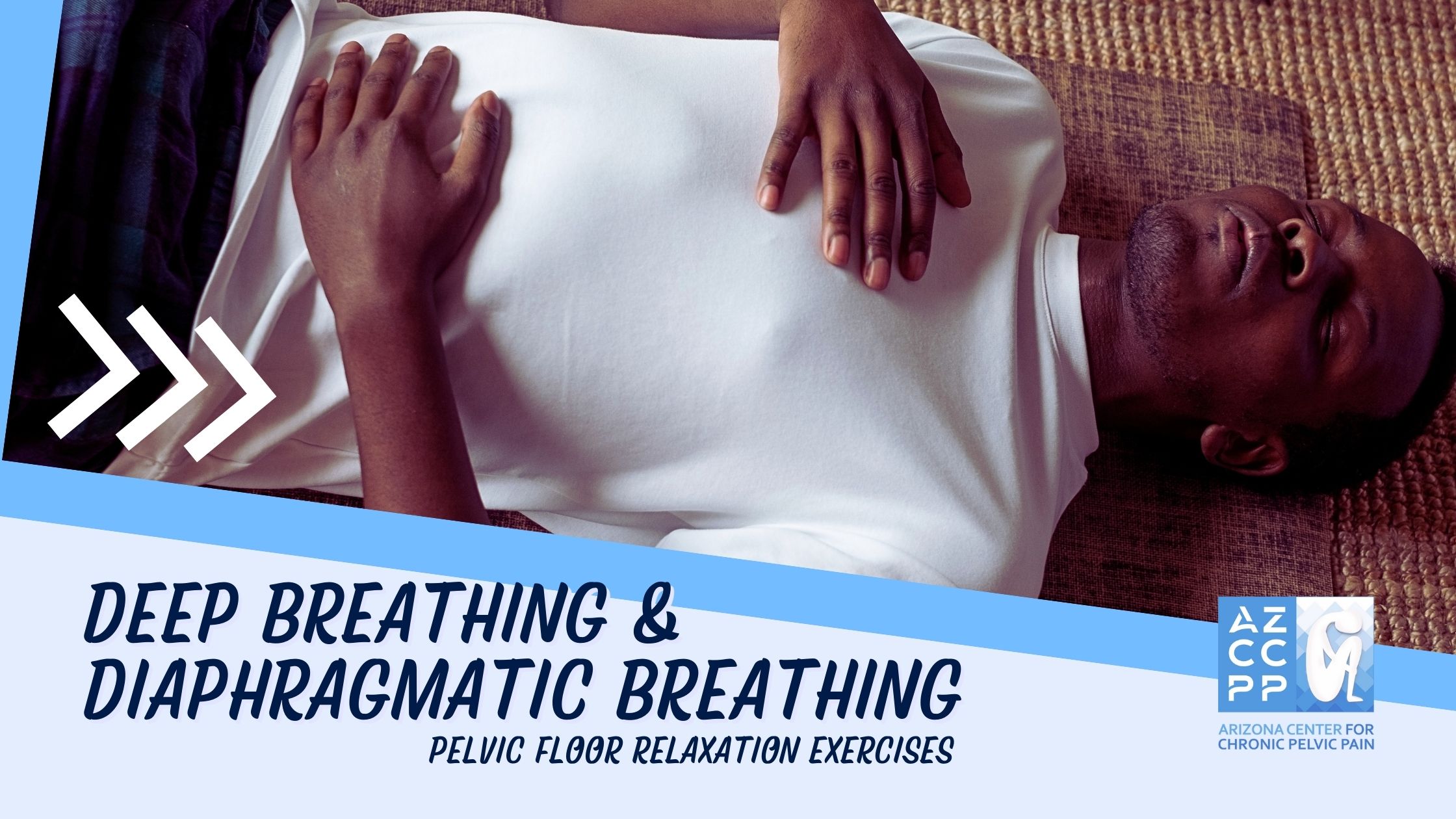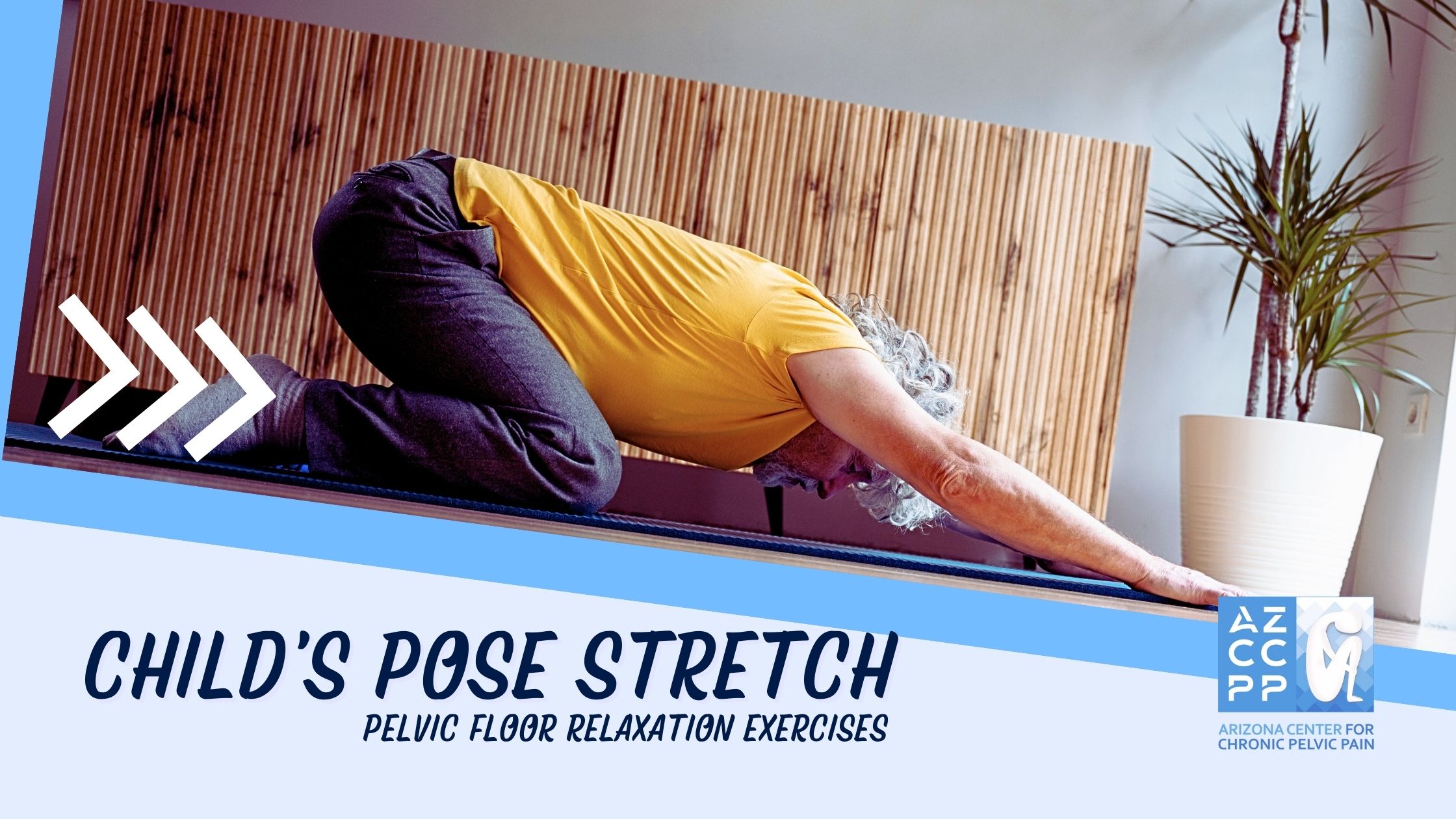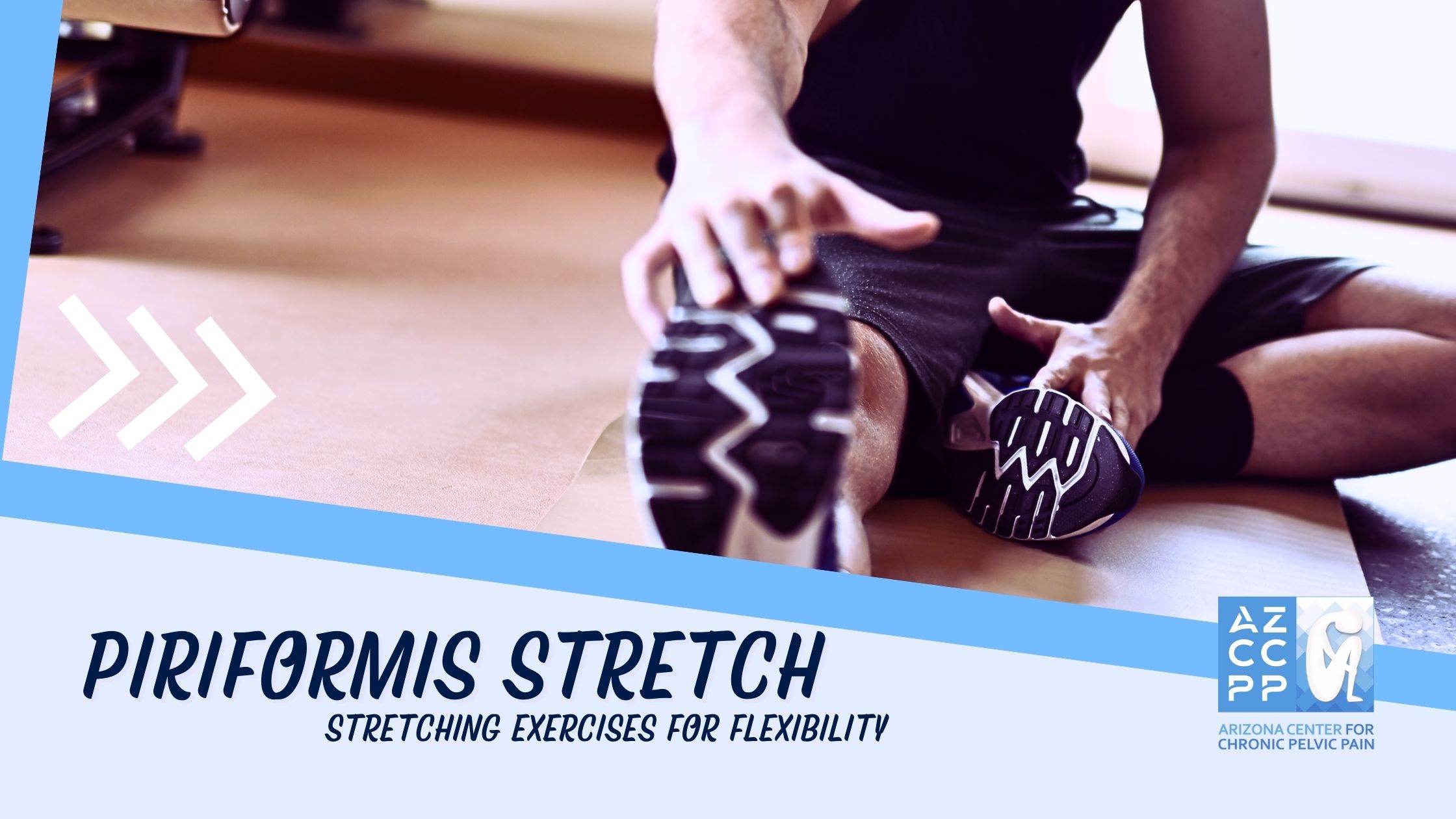Pudendal Neuralgia Exercises for Men
Pudendal neuralgia exercise for men is a topic you don’t normally see because many people consider pelvic pain to be a problem only women experience. However, research shows up to 10% of men experience pelvic pain due to pelvic floor dysfunction at some point in their lives.
Pelvic pain is quite common among men, with approximately 1 in 9 experiencing discomfort in the area between the pubic bone and tailbone, and pudendal neuralgia is one of the common causes of pelvic pain.
Pudendal neuralgia happens when the nerve passes via the Alcock Canal, a leathery tunnel in the pelvis, and may encounter compression from muscles or ligaments along its path. Men may also experience discomfort and dysfunction as a result of this inflammation.
This condition can significantly impact the quality of life, leading to debilitating pain and discomfort. While medical treatments are available, incorporating specific exercises can be an effective complementary approach to managing and alleviating symptoms.
This article outlines a series of step-by-step exercises designed to target pudendal neuralgia in men, promoting pain relief and improving overall pelvic health.
Understanding Pudendal Neuralgia in Men
Pudendal neuralgia in men occurs when the pudendal nerve, which supplies sensation to the pelvic region, becomes compressed or irritated, leading to chronic pelvic pain. This condition can manifest as sharp or burning pain, numbness, or discomfort in the perineum, genitals, or other parts of the pelvic area.
Common triggers for pudendal neuralgia in men include activities like prolonged sitting, cycling, surgical procedures, trauma, or inflammation. Managing this condition effectively requires a comprehensive approach, which may involve physical therapy, medication, and lifestyle changes.
Specific exercises can be beneficial to support these treatments. These exercises focus on strengthening and relaxing the pelvic muscles, helping to reduce irritation of the pudendal nerve and alleviate symptoms.
Key Benefits of Exercises for Pudendal Neuralgia

Before delving into the specific exercises, it is essential to understand their benefits. Regularly performing these exercises can help:
- Reduce pain: Gentle stretching and strengthening exercises can alleviate pressure on the pudendal nerve, reducing pain and discomfort.
- Enhance flexibility: Improved flexibility in the pelvic muscles can prevent further nerve irritation.
- Promote relaxation: Techniques such as deep breathing and muscle relaxation can reduce stress, often associated with chronic pain conditions.
- Improve posture: Correcting posture can alleviate pressure on the pelvic region, aiding in pain management.
Here are the pudendal neuralgia exercises or treatments for men that we highly recommend:
1. Developmental Kinesiology Exercises
-
Warm-Up: Preparing Your Body
Before starting any exercise routine, a proper warm-up is crucial. Spend 5–10 minutes performing gentle activities such as walking or light stretching to increase muscle blood flow and prepare your body for more intensive exercises.

-
Pelvic Floor Relaxation Exercises
Deep Breathing and Diaphragmatic Breathing
Breathing is the foundation of treating pelvic floor dysfunction, including pudendal neuralgia. It goes beyond simply supplying oxygen; it acts as the “power button” for your body’s systems, much like turning on a computer.
Proper breathing creates an axial line, or a core of support, around which strength and movement can be developed. For pudendal neuralgia, maintaining good posture is crucial, as it significantly influences how the pudendal nerve is compressed, stretched, irritated, or inflamed.

- Position: Lie on your back with your knees bent and feet flat on the floor. Place one hand on your chest and the other on your abdomen.
- Breathing: Inhale deeply through your nose, allowing your abdomen to rise while keeping your chest still. Exhale slowly through your mouth.
- Repetition: Perform this breathing exercise for 5–10 minutes, focusing on relaxing the pelvic floor muscles.
Child’s Pose Stretch

- Position: Begin on your hands and knees in a tabletop position.
- Movement: Slowly lower your hips back towards your heels, extending your arms forward on the floor. Rest your forehead on the ground.
- Hold: Maintain this position for 30–60 seconds, breathing deeply to relax the pelvic muscles.
- Repetition: Repeat 3-5 times.
-
Strengthening Exercises for Pelvic Stability
Pelvic Tilts
- Position: Lie on your back with your knees bent and feet flat on the floor.
- Movement: Tighten your abdominal muscles and gently tilt your pelvis upward, flattening your lower back against the floor.
- Hold: Maintain the tilt for 5–10 seconds, then relax.
- Repetition: Perform 10–15 repetitions.
Bridge Exercise

- Position: Lie on your back with your knees bent and feet flat on the floor, arms at your sides.
- Movement: Lift your hips toward the ceiling, squeezing your glutes and engaging your core.
- Hold: Maintain the bridge position for 5–10 seconds, then lower your hips back to the floor.
- Repetition: Perform 10–15 repetitions.
-
Stretching Exercises for Flexibility

Flexibility is a crucial aspect of physical fitness that often gets overlooked, especially by men. Incorporating regular stretching exercises into your routine enhances your range of motion and reduces the risk of injury during physical activities.
In addition, stretching is significant for men as it helps combat muscle stiffness and maintain mobility, which tends to decrease with age. Regular stretching improves blood circulation, enhances athletic performance, and can alleviate muscle tension, which is essential for overall health and physical fitness.
Below is an effective stretch to improve flexibility in your hip flexors.
Hip Flexor Stretch

- Position: Begin in a lunge position with one foot forward and the other knee on the ground.
- Movement: Push your hips forward gently, feeling a stretch in the front of the hip and thigh of the back leg.
- Hold: Maintain this position for 20–30 seconds.
- Repetition: Repeat on both sides 3-5 times.
Piriformis Stretch

- Position: Sit on the floor with your legs extended. Cross one leg over the other, placing your foot flat on the ground.
- Movement: Twist your torso towards the crossed leg, using your opposite arm to press against your knee for a deeper stretch.
- Hold: Maintain this position for 20–30 seconds.
- Repetition: Repeat on both sides 3-5 times.
-
Relaxation Techniques
Progressive Muscle Relaxation

- Position: Lie down in a comfortable position.
- Technique: Gradually tense and then relax each muscle group in your body, starting from your toes and working up to your head.
- Focus: Pay particular attention to relaxing the pelvic floor muscles.
- Duration: Perform this technique for 10–15 minutes.
-
Post-Exercise Cool Down
After completing the exercises, it is essential to cool down to prevent muscle soreness and promote relaxation. Spend 5–10 minutes performing gentle stretching and deep breathing exercises to allow your body to gradually return to a resting state.
2. Non-Surgical Pudendal Neuralgia Treatments
It is essential to exercise caution until it becomes crystal clear that surgery is the only option for pudendal neuralgia trauma or pain; many patients report improvement without non-surgical treatments below:
-
Spinal Manipulation or Mobilization
The pudendal nerve, which branches from the sacral plexus (a network of nerves in the lower spine), exits through the pelvis near the tailbone. It’s important to follow this nerve’s path from the spine to where it travels.
Spinal manipulation and mobilization focus on the nerve’s exit point at the pelvis, so internal manual pelvic floor therapy isn’t the right approach here.
This is a method in which practitioners utilize their hands or a tool to administer a deliberate and forceful movement to a joint in your spine. The magnitude of force may vary, but the thrust exerts a greater displacement on the joint than its natural movement.
-
Active Release Technique (ART)
Active Release Technique (ART) is a specialized soft tissue treatment that targets muscle tightness and shortening. This technique involves the practitioner working on specific muscles while the patient performs movements to engage the affected areas.
For those suffering from Pudendal Neuralgia, the key muscles to focus on include the Psoas, Iliacus, Abdominal Obliques, Obturator Externus, Piriformis, Adductors, and Hamstrings.
-
Nerve Flossing
Using a technique known as “nerve flossing,” one can ease the discomfort and symptoms brought on by compressed or stretched nerves. When nerves become compressed or stretched, they can become irritated, leading to pain, tingling, or other symptoms.
Nerve flossing involves specific movements that gently guide the nerve through its surrounding tissue, or sheath. This helps reduce tension and improve mobility, which can alleviate symptoms.
By gently moving the nerve back and forth, nerve flossing can help restore normal function and reduce discomfort. This process is demonstrated in the linked video, which provides step-by-step instructions on how to perform nerve flossing exercises correctly.
You can also do this easy pudendal nerve floss exercise:
-
Internal Manual Therapy of the Pelvis
Internal pelvic floor physical therapy provides a multitude of enduring advantages that can greatly enhance your quality of life. This therapy can effectively mitigate chronic pain, promote bladder and bowel control, and optimize sexual function by targeting and resolving underlying muscle tension, weakness, and imbalances.
Overall, internal pelvic floor physical therapy offers a comprehensive approach to treating and managing pelvic floor issues, providing patients with the tools they need for sustained relief and enhanced quality of life.
Conclusion
Incorporating these step-by-step exercises into your daily routine can significantly impact managing pudendal neuralgia. Consistency is key to achieving the best results, and it is important to listen to your body and adjust the exercises as needed. Always consult with a healthcare professional before starting any new exercise regimen, especially if you have a chronic condition like pudendal neuralgia.
By combining these exercises with other treatment modalities, you can improve your quality of life and reduce the discomfort associated with this challenging condition.
Read More on Pudendal Neuralgia Here:
Contact Us for Pudendal Neuralgia Treatment for Men

If you’re experiencing symptoms of Pudendal Neuralgia, don’t delay seeking medical attention. Contact the Arizona Center for Chronic Pelvic Pain for expert diagnosis and personalized treatment. Our experienced team specializes in managing pelvic pain conditions and can provide the care you need to feel better. Call us at (480) 599-9682 or email [email protected] to schedule an appointment.
AZCCPP offers comprehensive evaluation, personalized treatment plans, and compassionate care to help you find relief. Contact us today at (480) 599-9682 or [email protected] to schedule an appointment. You may also check out AZCCPP on YouTube for more questions that need answers with Dr. Michael Hibner.
By understanding the symptoms, causes, diagnosis, and treatment options for Pudendal Neuralgia, you can take proactive steps to manage this condition effectively and regain your quality of life.

